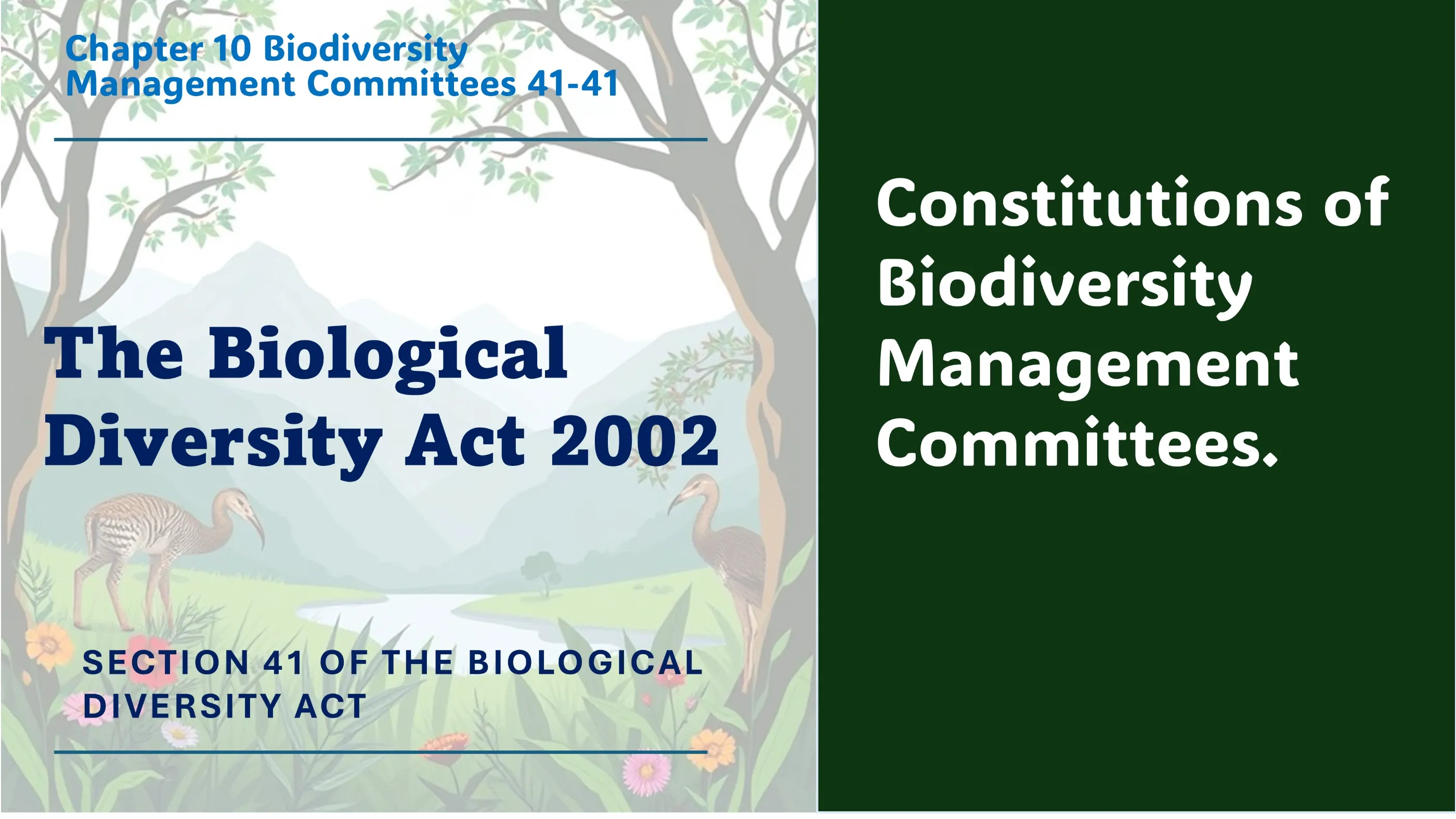Section 41 of The Biological Diversity Act: Constitutions of Biodiversity Management Committees.

Constitutions of Biodiversity Management Committees. Biological Diversity Act 2002
1[(1) Every local body at the Gram Panchayat level in the rural areas and at the Nagar Panchayat or Municipal Committee at Municipal Corporation level in the urban areas shall constitute a Biodiversity Management Committee (by whatever name called) within its area for the purpose of promoting conservation, sustainable use and documentation of biological diversity including preservation of habitats, conservation of landraces, folk varieties, farmers’ varieties, and cultivars, domesticated stocks and breeds of animals, living things in water bodies and microorganisms and chronicling of knowledge relating to biological diversity:
Provided that the State Government may constitute Biodiversity Management Committees at the intermediate or district Panchayat level for achieving the objectives of the Act.
(1A) The functions of Biodiversity Management Committee so constituted shall include conservation, sustainable use and documentation of biological diversity, including conservation of habitats, landraces, folk varieties, cultivars, domesticated breeds of animals, and microorganisms, and chronicling of traditional knowledge associated thereto relating to biological diversity:
(1B) The composition of the Biodiversity Management Committee shall be such as may be prescribed by the State Government:
Provided that the number of members of the said Committee shall not be less than seven and not exceeding eleven.]
(2) The National Biodiversity Authority and the State Biodiversity Boards shall consult the Biodiversity Management Committees while taking any decision relating to the use of biological resources 2[or traditional knowledge associated thereto] occurring within the territorial jurisdiction of the Biodiversity Management Committee.
3[Explanation. –For the purposes of this section–
(a) “cultivar” means a veriety of plant that has originated and persisted under cultivation or was specifically bred for the purpose of cultivation;
(b) “folk variety” means a cultivated variety of plant that was developed, grown and exchanged informally among farmers;
(c) “landrace” means primitive cultivar that was grown by ancient farmers and their successors;
(d) “farmers’ variety” means a veriety which–
(i) has been traditionally cultivated and evolved by the farmers in their field; or
(ii) is a wild relative or landrace of a veriety about which the farmers possess the common knowledge.]
(3) The Biodiversity Management Committees may levy charges by way of collection fees from any person for accessing or collecting any biological resource for commercial purposes from areas falling within its territorial jurisdiction.1. Subs. by Act 10 of 2023, s. 30, for sub-section (1) (w.e.f. 1-4-2024).
2. Subs. by s. 30, ibid., for “and knowledge associated with such resources” (w.e.f. 1-4-2024).
3. Ins. by s. 30, ibid., (w.e.f. 1-4-2024).